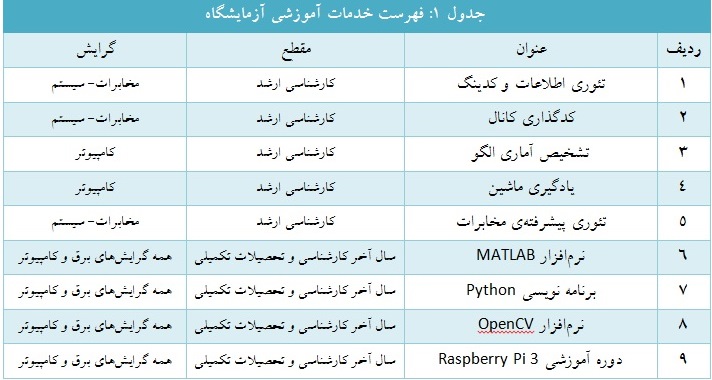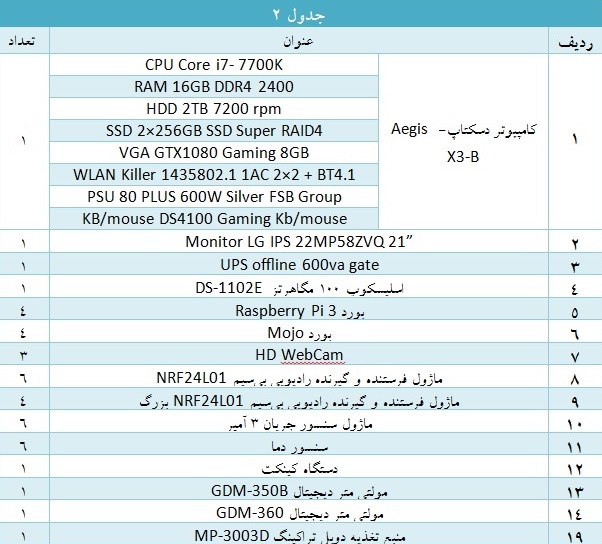Information Theory and Machine Learning Research Lab
Information theory and machine learning research lab.
Laboratory Manager:
Dr. Ehsan Namjoo

Assistant Professor of Shahid Chamran University of Ahvaz
Email: e.namjoo@scu.ac.ir
Website: https://itml.scu.ac.ir
1- Introducing the field of laboratory activity:
Information theory and machine learning are two fundamental and widely used subjects in the theory of digital communication and pattern recognition systems, respectively. Information theory itself includes two parts, channel coding and source coding. These two branches of information theory are widely used in sending, storing and compressing all kinds of digital information. In the field of information theory, the main goal of the research group is to find the fundamental limits of information theory, the software implementation of channel and source coding algorithms on different sources such as audio, image and video, and also the hardware implementation of these algorithms in order to achieve Interface circuits and hardware are necessary for compression, sending, receiving and safe storage of digital information. Therefore, the goals of the group in the field of information theory can be expressed in two general parts. In the first part, topics related to source coding will be the main focus of researchers' work, which will include topics such as compression without resource loss, compression with resource loss, rate-distortion optimization for independent and correlated sources, and distributed compression of dependent sources. In the second part, researchers will specifically focus on channel coding methods for image and video sources. This section itself will include topics such as the implementation of various channel codes, safe storage and retrieval of information.
In the field of machine learning, researchers will focus on the core of the pattern recognition system, or in other words, the learner. The study and research on machine learning algorithms and learning theory and finally the implementation of machine learning algorithms are of interest to researchers in this field; However, research in the field of other topics related to pattern recognition, including dimensionality reduction methods, clustering methods, feature selection and learning methods, will be of interest to laboratory researchers. The research axes of the laboratory are described in more detail below
1-1- Information theory and coding
In this regard, the following subjects are of interest and attention to the laboratory researchers.
- Implementation of lossy and lossless coding methods of information sources separately
- Implementation of distributed coding methods of dependent and participatory resources for all types of related resources including one-dimensional resources such as sound, temperature and multi-dimensional resources such as image and video.
- Channel coding and their hardware processing and checking the improvement in the performance of transmitters and receivers, as well as improving information storage and retrieval algorithms.
- Compact sensing for sub-Nyquist rate sampling as well as its application in compression and recovery of thin signals
1-2- Pattern recognition and machine learning
In this regard, the following topics are of interest and attention to researchers.
- Designing pattern recognition systems for movement detection, tracking or identifying targets.
- Designing and building pattern recognition systems for machine vision and robotics purposes
- Designing and building surveillance systems such as face detection and recognition systems
1-3- Fields related to the intersection of the previous two fields
Many emerging research fields often come from the intersection of research fields close to each other, some of which have found a prominent place in industry and technology today. In this regard, this section will be launched for researchers interested in combining information theory and machine learning. Among the topics that will be focused on in this field, the following can be mentioned.
- Using machine learning methods to design image and video coding and compression systems
- Using methods based on information theory to achieve goals such as feature learning and feature selection
2- The general objectives of the laboratory:
According to the introduction presented, the goals and general policies of the laboratory are given below
- Practical implementation of algorithms in the research areas of the laboratory including information theory, coding and machine learning in order to evaluate the accuracy and practicality of theoretical ideas.
- Conducting current researches in the research areas of the laboratory
- Providing a suitable platform for applying the research of graduate students and active industries in the research areas of the laboratory
- Cooperation with other research laboratories in the faculty in the form of defining research projects in order to advance the research goals of the laboratory and empower them to work in knowledge-based companies and industrial research.
- Providing laboratory services to graduate students with research fields similar to the research fields of the laboratory
- Providing research services to knowledge-based companies and cooperating with them in the production of knowledge-based products
3- Scientific publications related to the field of laboratory research
Journal Papers
Ehsan. Namjoo, Ali Aghagolzadeh, and J. Musevi-nia, "Robust Transmission of Scalable Video Stream using Modified LT Codes," Computers and Electrical Engineering, Elsevier, vol. ۳۷, issue ۵, September ۲۰۱۱.
Ehsan. Namjoo, Ali Aghagolzadeh, and J. Musevi-nia,, "A New Rateless Code With Unequal Error Protection Property," Computers and Electrical Engineering, Elsevier, Elsevier, vol. ۳۹, issue ۷, September ۲۰۱۳.
Elham Besharati, Marjan Naderan Tahan, Ehsan Namjoo, "LR-HIDS: logistic regression host-based intrusion detection system for cloud environments," Journal of Ambient Intelligence and Humanized Computing, vol. ۵۳, Issue ۱۰, pp. ۱-۲۶, ۲۰۱۹.
Masoud Aramideh, Ehsan Namjoo, and Mahdi Nooshyar, " New Sparse Source Models and Their Rate-Distortion Behaivior," under preparatio
Conference Papers
M.A. Tinati, E. Namjoo, M.B.A. Haghighat, "Evaluating the Effect of the Eigenvalues on BDF Classifier in Face Detection," The ۵th IEEE International Conference on Application of Information and Communication Technologies (AICT), pp. ۶۴۷-۶۵۱, Oct. ۲۰۱۱,
M.B.A. Haghighat, E. Namjoo, "Evaluating the Informativity of Features in Dimensionality Reduction Methods," The ۵th IEEE International Conference on Application of Information and Communication Technologies (AICT), Oct. ۲۰۱۱, Baku, Azerbaijan.
M.B.A. Haghighat, M. Geravanchizadeh, E. Namjoo, "A Region-Based Edge Detection Technique for Noisy Images," The ۳rd IEEE International Conference on Application of Information and Communication Technologies (AICT), pp. ۱-۵, Oct. ۲۰۰۹, Baku, Azerbaijan.
S. Kamali-Klathur ,A. Aghagolzadeh, and E. Namjoo "Finding the optimum number of skin-tone Clusters in Skin Color Segmentation" presented in ۱۷th Iranian Conference of Electrical Engineering, University of Science and Technology, May ۲۰۰۸ Tehran, Iran. Skin Color-based Face Detection," presented at ۱۵th Iranian Conference on electrical Engineering (ICEE), May ۲۰۰۷, Tehran, Iran.
E. Namjoo and A. Aghagolzadeh, "A Novel Approach for Skin Regions Extraction in Color Images" presented in IEEE International Conference on Signal Processing and communication, ۲۴-۲۷ November ۲۰۰۷, Dubai, UAE.
4- Educational services provided by the laboratory
The following educational services will be held in connection with the topics of interest of the laboratory in order to improve the scientific knowledge of the laboratory. Table (1) presents some of these services.

5- Research/industrial services provided by the laboratory
The laboratory is able to provide research and industrial services required by the university and industry in the form of the following.
- Providing hardware platforms, consulting and guidance in order to operationalize related researches required by the industry and postgraduate theses.
- Providing hardware platforms, guidance and advice to work with knowledge-based companies.
6- Laboratory space and laboratory equipment
The laboratory is located in the Faculty of Engineering, on the ground floor, next to the Islamic Student Association. Also, the list of laboratory equipment is presented in Table (2).


